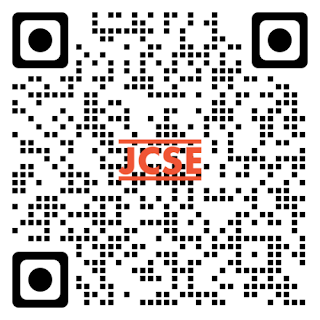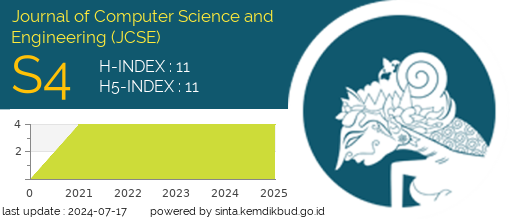Aircraft Recognition in Remote Sensing Images Based on Artificial Neural Networks
(1) Universitas Mercu Buana
(2) Universitas Mercu Buana
Abstract
Keywords
Full Text:
PDFReferences
V. Shah, “Image Processing and its Military Applications”, DSJ, vol. 37, no. 4, pp. 457-468, Jan. 2014.
T. Hiippala, “Recognizing military vehicles in social media images using deep learning,” 2017 IEEE International Conference on Intelligence and Security Informatics (ISI), Jul. 2017, doi: 10.1109/isi.2017.8004875.
D. Legendre and J. Vankka, “Military Vehicle Recognition with Different Image Machine Learning Techniques,” Communications in Computer and Information Science, pp. 220–242, 2020, doi: 10.1007/978-3-030-59506-7_19.
C. Chen, J. Huang, C. Pan, and X. Yuan, “Military Image Scene Recognition Based on CNN and Semantic Information,” 2018 3rd International Conference on Mechanical, Control and Computer Engineering (ICMCCE), Sep. 2018, doi: 10.1109/icmcce.2018.00126.
X. Xiaozhu and H. Cheng, “Object Detection of Armored Vehicles Based on Deep Learning in Battlefield Environment,” 2017 4th International Conference on Information Science and Control Engineering (ICISCE), Jul. 2017, doi: 10.1109/icisce.2017.327.
A. Zhao et al., “Aircraft Recognition Based on Landmark Detection in Remote Sensing Images,” IEEE Geoscience and Remote Sensing Letters, vol. 14, no. 8, pp. 1413–1417, Aug. 2017, doi: 10.1109/lgrs.2017.2715858.
Qichang Wu, Hao Sun, Xian Sun, Daobing Zhang, Kun Fu, and Hongqi Wang, “Aircraft Recognition in High-Resolution Optical Satellite Remote Sensing Images,” IEEE Geoscience and Remote Sensing Letters, vol. 12, no. 1, pp. 112–116, Jan. 2015, doi: 10.1109/lgrs.2014.2328358.
Z.-Z. Wu et al., “A benchmark data set for aircraft type recognition from remote sensing images,” Applied Soft Computing, vol. 89, p. 106132, Apr. 2020, doi: 10.1016/j.asoc.2020.106132.
Xu Y, Jia R, Mou L, Li G, Chen Y, Lu Y, Jin Z. Improved relation classification by deep recurrent neural networks with data augmentation. 2016 Jan 14. arXiv preprint arXiv:1601.03651.
Wang J, Perez L. The effectiveness of data augmentation in image classification using deep learning. Convolutional Neural Networks Vis. Recognit. 2017 Dec;11:1-8.
Asperti A, Mastronardo C. The effectiveness of data augmentation for detection of gastrointestinal diseases from endoscopical images.2017 Dec 11. arXiv preprint arXiv:1712.03689.
M. V. Valueva, N. N. Nagornov, P. A. Lyakhov, G. V. Valuev, and N. I. Chervyakov, “Application of the residue number system to reduce hardware costs of the convolutional neural network implementation,” Mathematics and Computers in Simulation, vol. 177, pp. 232–243, Nov. 2020, doi: 10.1016/j.matcom.2020.04.031.
Liu S, Liu Z. Multi-channel CNN-based object detection for enhanced situation awareness. 2017 Nov 30. arXiv preprint arXiv:1712.00075.
He, Kaiming & Zhang, Xiangyu & Ren, Shaoqing & Sun, Jian. (2016). Deep Residual Learning for Image Recognition. 770-778. 10.1109/CVPR.2016.90.
He, F., Liu, T., & Tao, D. (2020). Why ResNet Works? Residuals Generalize. IEEE Transactions on Neural Networks and Learning Systems, 1–14. https://doi.org/10.1109/tnnls.2020.2966319
Refbacks
- There are currently no refbacks.
 Journal of Computer Science and Engineering (JCSE)
Journal of Computer Science and Engineering (JCSE)Published by : ICSE (Institute of Computer Sciences and Engineering)
Website : http://icsejournal.com/index.php/JCSE/
Email: jcse@icsejournal.com
 is licensed under a Creative Commons Attribution-ShareAlike 4.0 International License.
is licensed under a Creative Commons Attribution-ShareAlike 4.0 International License.







